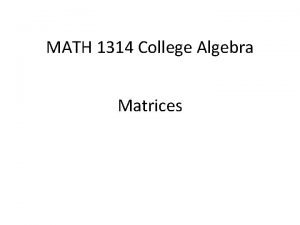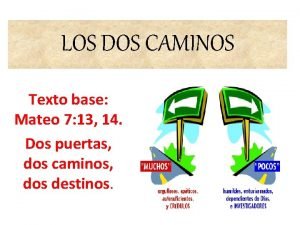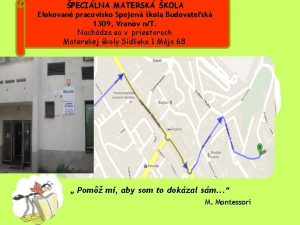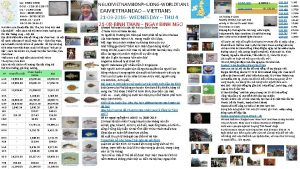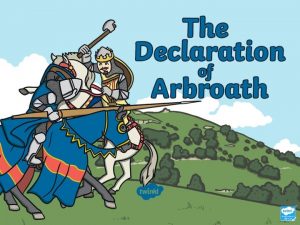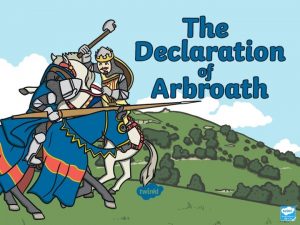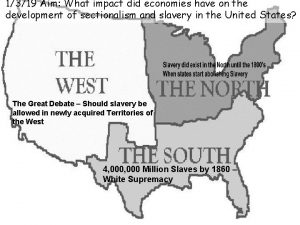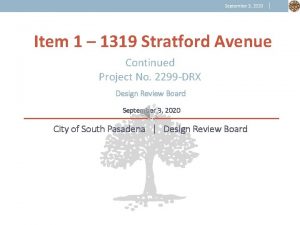1309 1314 1319 1309 1314 The War with















- Slides: 15

1309 -1314

1/3/19 1309 -1314: The War with England renewed AIM – Learn how Bruce fought to push the English out of Scotland from 1309 -14. SUCCESS CRITERIA – • Be able to describe how Bruce overcame English control of Scotland, from 1309 -14. • Be able to explain why Bruce used guerrilla tactics to capture enemy strongholds. • Be able to explain why Edward didn’t prevent Bruce’s attacks upon his Scottish strongholds. TASKS 1. Copy today’s aim and heading into your jotter. 2. Through class questioning, recap the events of Bruce’s civil war. 3. Discuss through plenary the answer to last lesson’s ‘big question(s)’. 4. Go through today’s PPt, taking notes of information given in bold. 5. Use what we’ve learned and apply it to today’s ‘big question’ and take a note of our homework. HOMEWORK (due in on Friday 8 th March) • Complete ‘Bruce adopts guerrilla warfare’ worksheet questions for Friday 8 th March (Miss Harrison will give reminders). • Make sure that the notes and ‘big questions’ from today’s lesson are complete in your jotter (use the PPt on the school website, if needed).

Edward II returns • With Bruce’s civil war in Scotland over by 1309, he turned his attentions on the English strongholds and their garrisons still remaining in Scotland. • Edward still had a number of Scottish lords who were loyal to him. Men such as Patrick, earl of Dunbar and William Soules of Liddesdale held considerable lands in south and eastern Scotland in Edward’s name. • In 1309, Bruce began a sustained campaign of attacks against the English loyalists in Scotland. These took the form of lightning raids into enemy territory, driving off livestock, and extorting payments in grain and gold as blackmail in return for truces. Nobody is getting in!: Dunbar castle – southeast of Edinburgh – was one of Scotland’s strongest castles and guarded a key trading port to northern Europe. Patrick Dunbar would hold it for Edward until 1315.

• The aim of these attacks was to impoverish the communities of his enemies and resupply Bruce’s own forces, whilst demonstrating the inability of Edward to protect his own supporters. • The complaints of the men of Lothian persuaded Edward II to raise another army to invade northwards from Berwick in 1310 and 1311. Piers Gaveston, 1 st Earl of Cornwall: Edward’s arrogant and offensive favourite, whom England's barons loved to hate. Throughout history it was alleged he shared an intimate relationship with the king, although historians today are divided on whether or not this was just a smear campaign to discredit him. • Edward’s efforts were hampered by the refusal of many of his lords to serve alongside his despised favourite, Piers Gaveston. The invading army was comparatively small for its time, and money was tight.

• Edward made a few expeditions into Lothian, but Bruce refused to face him in open battle. • On 1 st October, 1310 Bruce wrote to Edward in an attempt to establish peace between Scotland England. • There would be no peace, but neither would there be a battle. With his supply lines exposed, Edward was forced to withdraw to winter his forces in Berwick, angry that Bruce would not fight him. Found it down the back of the couch: Bruce’s letter to Edward II offering peace – filed away and forgotten in the British Library until found by chance in 2013 by a University of Glasgow lecturer.

• Rather than risk a costly defeat in a field battle with the English army, Bruce waited until Edward was back in Berwick before ordering his men to raid across the border into England’s northern counties. • Bruce’s plan not only secured portable loot for the Scots, carried off from Northumberland Cumbria, it also made Edward look weak and unable to protect his subjects. • This tactic forced Edward to stay in the south to try and protect his lands from attack. The English army stayed in Berwick until mid 1311, when Edward led them back south in England, not returning for another 3 years. “I can tell you I don't have money. But what I do have are a very particular set of skills, skills I have acquired over a very long career. Skills that make me a nightmare for people like you…”: Bruce’s soldiers struck across the border and stripped England’s northern counties bare.

A piece at a time • The departure of Edward gave a huge boost to the morale of the Scots. Nine English garrisons are not heard of again after Edward’s withdrawal, suggesting they fell shortly afterwards. • Bruce’s men carried a sustained series of attacks into Lothian until the region was at his mercy. The local population claimed to have suffered £ 20, 000 in lost money, corn and cattle between 1310 and 1313. Beleaguered: Many English garrisons were left to their fate after their King marched south.

• Bruce and his men also began picking off the remaining English held outposts beyond Lothian and reducing them. In 1311, they took Dumbarton Castle. • Bruce himself led the capture of Perth in January 1312. • Here the Scots pretended to withdraw and abandon their siege, only to return that night. Shrouded by darkness, they waded through the icy moat to scale the walls with grappling hooks and rope ladders. • Once inside, Bruce and his men overwhelmed the defenders. He executed the town’s leading burgesses for resisting him. Dumbarton Rock: Stronghold of Sir John de Mentieth, the man who betrayed William Wallace to the English in 1305.

• By December 1312, Lothian was subdued enough for Bruce to lead an attack through to Berwick. He again tried his rope ladders, but the attack failed when the English garrison was alerted by a barking dog. • In February 1313, Bruce’s men completed the subjugation of Galloway, taking Dumfries Castle Rushen: Standing in Castletown, this was the centre of power in Man. The last Viking of Man died there in 1265. • In May 1313, Bruce took to his ships – landing an army on the Isle of Man to capture a strategic outpost from the English.


• In September, Bruce’s men jammed a loaded hay wagon concealing 8 armed in the open castle gate at Linlithgow. They held off the defenders long enough to provide access for others hidden outside to overwhelm the garrison. • This success prompted a major political move by Bruce: he issued an ultimatum to those Scots still loyal to Edward. They had one year to submit to him or face permanent disinheritance and the loss of their lands. Stuck in the middle with you: Bruce’s jokers left the English garrison at Linlithgow looking like clowns!

I’m on it!: By 1313, Edward seemed to have resolved his problems in England was at last able to unite his barons against the Scots. • In response to this, “the people of Scotland” wrote a letter to Edward appealing for his help… • Having negotiated a settlement with his unruly barons, Edward was in a position to intervene. He wrote to his loyal supporters, praising their efforts against his “enemies and rebels”. Edward announced his plans to lead an army north at midsummer, 1314. • This gave the Bruce 9 months’ breathing space to prepare for Edward’s arrival. He exploited this by moving against the remaining key English garrisons in Scotland.

“Look at all those cows, lads – there’ll be fresh milk in the morning!”: English garrison commander’s last words… • On 28 th Feb, 1314, James Douglas led a force into Teviotdale and took the walled city of Roxburgh. They snuck up to the walls at night, disguised as cows amongst a grazing herd. Using grappling hooks and rope ladders, they scaled the walls and overcame the garrison. • In March 1314, Thomas Randolph and his men scaled the cliff at Edinburgh castle to surprise the garrison in the dead of night. • The Bruce ordered the destruction of both strongholds. Two major castles which would have acted as bases for Edward’s midsummer campaign were now lost to him.

• Bruce sent his brother – Edward Bruce - to besiege a third key stronghold at Stirling Castle. • By now, Edward’s arrival was not far away. At Stirling, both besiegers and besieged agreed a local truce. Edward Bruce would not attack the castle – in return, if the garrison was not relieved by midsummer, it would surrender. • The siege of Stirling was not the reason for Edward’s invasion, but the truce made it a goal for the king’s army. It assembled at Berwick and marched north in June, 1314. • Bruce waited at Falkirk with his smaller army. As Edward approached he moved north through the Torwood to Bannockburn, just south of Stirling. Here he decided whether to withdraw to the west, or fight. The key to Scotland: In 1314, Stirling would become the proving ground of Bruce’s ambitious new reign.

Today’s ‘Big Question(s)’ • Take note of the questions in your jotter and write an answer drawing upon the notes you have taken today: • Why did Edward allow Bruce to systematically capture and destroy his garrisons in Scotland between 1309 and 1314? • Why did Bruce use guerrilla tactics to capture English strongholds? • By midsummer 1314, in your opinion who is in the strongest position regarding Edward and Robert Bruce?
 Matrices
Matrices Porque angosto es el camino
Porque angosto es el camino 1314. matrix block sum
1314. matrix block sum 1309-1377
1309-1377 Spojená škola budovateľská 1309 vranov nad topľou
Spojená škola budovateľská 1309 vranov nad topľou Avignon exile
Avignon exile War at home and abroad madison
War at home and abroad madison Why was josette dugas for the war of 1812
Why was josette dugas for the war of 1812 Chapter 30 the war to end war
Chapter 30 the war to end war Ich war du warst er sie es war
Ich war du warst er sie es war Korean war vietnam war venn diagram
Korean war vietnam war venn diagram Sein remsen
Sein remsen Chapter 30 the war to end war
Chapter 30 the war to end war The cold war lesson 1
The cold war lesson 1 Balanced force
Balanced force Chapter 16 lesson 2 challenges to slavery
Chapter 16 lesson 2 challenges to slavery
